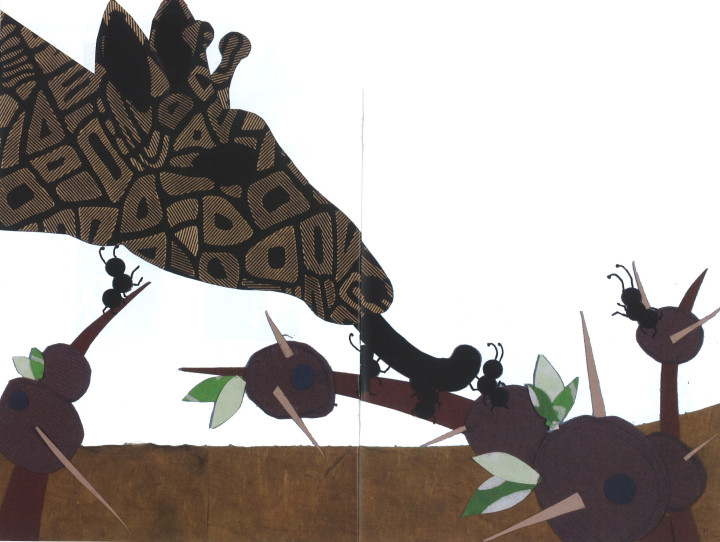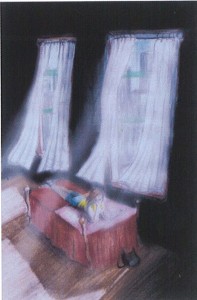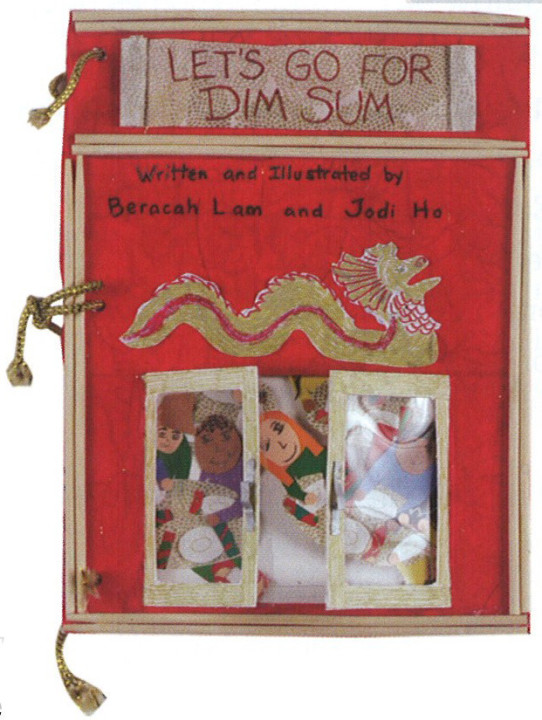By Lillie Pope, Ph.D.
Among the personal effects of author-illustrator Ezra Jack Keats at his death in 1983 was a small tin medal in a tattered box. It was awarded to him in junior high school for excellence in art, when he was 12 years old. Its message sustained and encouraged him to persevere, continue his education and develop his talents despite countless obstacles.
With the goal of providing that same support to young people today, the Ezra Jack Keats Foundation and the New York City Department of Education established the Ezra Jack Keats Bookmaking Competition for public school students. This program, now over 30 years old, spotlights the budding artists and writers in elementary, intermediate and high school, and offers the dedicated teachers who work hard to support and encourage their students the recognition and reward they deserve. Since the program could not have flourished without the cooperation and support of the Brooklyn Public Library, and formerly the New York Public Library, it also demonstrates the effectiveness of a true interdisciplinary partnership of schools and libraries.
Each year the prize-winning boys and girls attend the awards ceremony to accept their medals. They range from tiny to tall, from recent immigrant to longtime citizen, and from every ethnic and socioeconomic background. Their parents, bursting with pride, take hundreds of photographs and carry bouquets of flowers for their young winners; the award signals that their children will be able to face life’s challenges successfully.
The Competition
The competition is divided into three levels: grades 3 through 5, grades 6 through 8, and grades 9 through 12. From all of the books made by classes at each participating school, the principal and arts coordinator select one book as the school-wide winner to submit to the Department of Education. (School-wide winners range in number from 200 to 460.) From these, a jury of librarians, teachers and artists selects the winning books at each level from every borough, and the best book at each level overall. All of the winning students receive medals; borough-wide winners are also awarded $100, and city-wide winners, $500. The teachers or the librarians who advised the borough and city-wide winners are recognized with prizes of their own.
Subject Matter
The children write about many things, from fantasies to personal concerns. Some stories are based on real events, others spring from the child’s imagination. Wild animals and pets abound in the stories and illustrations. Homelessness, drug abuse, AIDS, sibling rivalry, birth, adapting to a new country, and the discomfort and embarrassment of wearing braces on your teeth have all been themes. Romance, inheriting a million dollars, gaining respect and the need for tolerance of all people have also appeared. Grandparents are precious to these children, and many write about them. Family values, love and respect are a common theme:

More than anything in the World, I love My Grandpa
And I love fishing too!
Grandpa loves me, and he also loves fishing.
He always has time for me.
Like Grandpa says,
“I have all the time in the WORLD.” (K., 5th grade)
The travails of growing up and the arrival of siblings provoke the words:
Why did mommy have another baby?
Wasn’t I enough?
I didn’t ask for a baby.
I ask for better stuff. (M., 3rd grade)
On the plight of the homeless:
Two homeless men live in a tent. It looked like a teepee. They made it out of cloth from old mailbags they had found. (S., 4th grade)
In a book called “And They Lived Happily After,” the young author uses the beloved princesses Snow White, Rapunzel and Sleeping Beauty as her characters. There is only one difference between her princesses and Disney’s. While hers marry and become queens, they are queens with problems. And the problems are those of present-day reality.
The autobiographies are sometimes painful. “My Life” tells how José’s father left El Salvador to come to the United States to earn a living. Between Mexico and Guatemala, he was robbed of all his money. But he finally made it, and was joined later by his wife. After two years, José joined his parents here. As of the writing of this article, his brother and sister were still in El Salvador.
In the book “Bad Times,” the writer is placed in foster care because of her mother’s neglect before finally moving in with her aunt. Her story ends with the moral:
Boys and girls: if something like this happens to you, tell your mother to take you to your appointments, or whatever it is you have to do. Don’t end up like me. (J., 4th grade)
A mother warns her son about the perils of skateboarding. He barrels down the hill anyway, narrowly missing a car. While the boy comes out unharmed, his skateboard is destroyed. The moral is clear.
The mall and shopping surround these children, many of limited means. This does not stop them from dreaming, however. In one touching story, a girl named Mary who lives in a shelter gets a letter that she has inherited one hundred million dollars. She borrows a dress to go to the reading of the will. After receiving the check, she goes to Pizza Hut for a snack, and then buys a small house and a couch at Jennifer Convertibles.
In “Roundy-Boundies vs. Merry Squares,” the Rounds and the Squares seem incompatible, but they learn to live together happily and peacefully. The inhabitants of this book were computer-generated, and beautiful.

Circles and squares, it’s clearly true
Are very different, so what should they do?
They chose to hate and to dislike,
To compete and even fight.
The fight was over and everyone was gone
Except for the quarrelers who were now having fun.
They have learned that looks don’t matter
It’s not what makes you worse or better.
What you see is just a cover.
What’s inside is what you’re after.
So be kind, do not offend,
Be understanding, be a friend. (R., 8th grade)
Even in the face of adversity, many of the stories are upbeat, and hold hope for the future.
When these books are on display in the children’s reading room of a branch library, there are many visitors, and occasionally someone bemoans the fact that much of the subject matter is not happy. They are troubled that children write about divorce, single parenting, loss and illness. Many children live in a world far different from the one we might hope for them, and their themes reflect their world. How can they write books about a world without problems when no such world exists? The Department of Education and the Ezra Jack Keats Foundation have embraced the children’s need to express their feelings and thoughts about what is bad, as well as good, in their lives. We are grateful to learn from these young writers in their fresh, honest books. Nevertheless, the issue of subject matter is a philosophical problem, and merits further discussion.
Quality
Some of the writing is poetic and abundant, and some is prosaic and minimal; some is sophisticated, and some is relatively primitive. The print has as wide a range as the stories, from uneven handwriting to computer text. The quality of each book emerges in the combination of concepts, verbal expression and illustration.
The illustrations come in many mediums, including watercolors, pen and ink, collage, plastic, fur, feathers, Velcro, fabric, paper bags, pipe cleaners, glitter, cellophane and marbleized paper. Some are cartoon-like drawings; others are subtle and sophisticated paintings in the Japanese style; still others are computer-generated. Ingenious and handsome pop-up and pullout books make an appearance in the competition, as do comic books, reminding us of the witty use author-illustrators such as Jules Feiffer and Maurice Sendak have made of the comic book form. Humor is displayed both in illustrations and in text.
In the early years of the competition, no size limit for the books was stipulated, and many of the books were very large and difficult to handle for the jury and librarians. It is now required that the books be no larger than 15 by 18 inches; this requirement has not limited the quality of the entries.
Labor
This program is labor-intensive. The children, the parents, the teachers, the arts coordinators, the citywide director of the program and her assistant, the librarians and the jury all work hard, well beyond the call of duty. It is permissible for two children to collaborate on one book: one may write and the other illustrate. In most cases, though, the same child writes and illustrates. When a collaborative effort wins an award, each collaborator is honored with a medal.
Public Response
The several hundred winning books are exhibited at a branch library for one month in the spring, and are read to classes during library visits. Parents and children return again and again to the library to look at their favorite books. Many people comment on the excellence of the books and request that they remain part of the library’s permanent collection, which, unfortunately, is not possible. After the exhibition, the books are returned to the children who created them.
Outcome
This project is a dramatic demonstration of the effectiveness of an arts-in-education program in enriching a reading program. The books that are produced represent an incredible amount of work by children and educators. Recognizing and rewarding that effort with a medal, a certificate, an announcement, names in a printed program and a check is a well-deserved and inexpensive investment in the future. Participants gain a love and respect for the printed word, and have a greater ability to express themselves verbally and graphically. Children who collaborate on a book learn about the problems and the power of teamwork to achieve a common goal. They have more self-confidence, self-esteem and pride in their work, and perhaps a developing ambition for the future. For parents, it is encouragement and an appreciation for the much-maligned educational system that provides for their child. And for the educator, it is recognition, appreciation for a job well done and encouragement to continue investing that kind of effort. This type of program merits replication. It can be modified easily to fit any school or school system.
